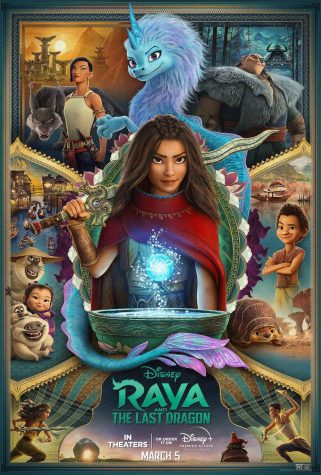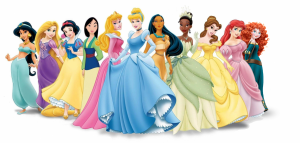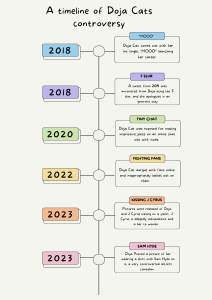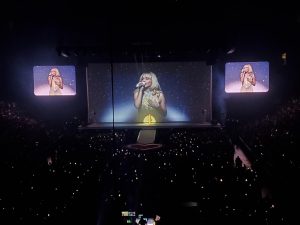Raya and The Last Dragon: Disney’s First Southeast Asian Princess
March 11, 2021
![]()
![]()

![]()
Raya and The Last Dragon, the newest movie released by Disney on March 5th, has gotten many positive ratings, with Rotten Tomatoes giving it a 95%. A fantasy land with Southeast Asian elements as well as an epic quest, Raya and the Last Dragon is a fantastic movie.
The movie starts out with a quick recap of the past: Kumandra, once a land populated by dragons and humans, was overrun by Druun (a purple cloud-like mass) that turned both into stone. The dragon Sisudatsu (nicknamed Sisu) created a gem that stopped and trapped the Druun, unfreezing those turned to stone. However, the dragons stayed frozen, and Sisu, the last dragon, disappeared.
The opening scene then jumps to hundreds years later, when the people are divided into 5 warring factions (Fang, Heart, Tail, Spine, and Talon), we meet up with Raya. Being the daughter of Chief Benja, leader of Heart (officially making her a princess), she strives to protect the dragon gem, being ‘the last bit of dragon magic in the world.’ Chief Benja yearns for a land of peace and invites all tribes to Heart. When she is betrayed by a fellow princess, the Druun are re-introduced to the world and the gem shatters into 5 pieces. Raya sets off to find the only remaining dragon, and the story picks up with her 6 years later, which is when the main plot of the movie begins.
Raya is joined by a motley crew as the film progresses: a boat restaurant owner, a formidable giant, and strangely strong toddler with her pet/friend monkeys (introduced as ‘ongis’).
Dragons play a huge role in the movie of course, being mentioned in the title, and even going so far as to influence the shape of the major river in Kumandra. The 5 warring tribes are even named after different parts of the dragon; Fang, Heart, Tail, Spine, and Talon.
![]()
The land of Kumandra is beautifully animated, the tribe’s lands being extremely detailed and invoking a sense of reality. One particular scene involves Sisu swimming through a river, the fish swirling around the dragon, and the underwater aquatic plants swaying peacefully.
The fantasy lands culture and lore is inspired by many Southeast Asian countries, making Raya the first Southeast Asian princess. While many reviews speak positively of the movie, a recurring theme is the frustration by Southeast Asian critics (and fans) regarding the fact that the majority of the voice cast is composed of East Asian actors.
As someone who grew up surrounded by princesses, I was fairly excited for the fact that Disney was giving us a new princess. Unlike the other Disney princesses, Raya is self-confident in her abilities (reasonably so; she’s a very strong warrior) and understands the extent of her abilities.
The movie’s main antagonist is the princess that betrayed Raya early in the film, with multiple stand-offs between the two. While Raya’s group grows, the princess seems to be a constant threat to Raya. However, Raya’s inability to trust others seems to be a major hindrance to herself.
The movie strongly encourages trusting one another, usually using Sisu as the voice to do so. Raya was betrayed early in the movie, which stuck with her throughout the entire plot. She’s wary and defensive, while Sisu trusts people blindly. As Raya gains a larger group, she begins to trust others more (even if it’s only a little bit).
Regardless of age, Raya and The Last Dragon is a hit, giving Disney a new princess and an amazing story to tell.











